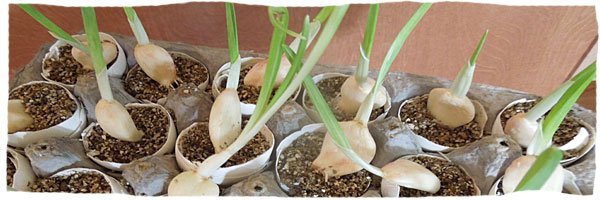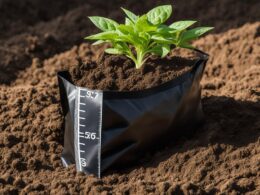Are you struggling with a lawn that is too thick? Thick grass can lead to numerous problems, such as increased weed growth, disease, and poor air circulation. But don’t worry, there are steps you can take to thin out your grass and restore a healthy, safe lawn.
In this article, we will guide you through the process of thinning out your thick grass, ensuring that you achieve a lush and vibrant lawn without compromising safety. We will explain the reasons behind excessive grass thickness, discuss the negative consequences it can have, and offer techniques for thinning out your lawn effectively.
By following our advice and implementing proper watering, fertilization, aeration, and maintenance practices, you will be able to achieve a beautiful and safe lawn that you can enjoy year-round.
So let’s get started and transform your thick grass into a healthy, manageable lawn.
Quick Summary
- Regular mowing and adjusting cutting height can prevent excessive grass thickness.
- Removing debris and thatch from the lawn can also prevent grass thickness.
- Proper watering and fertilization practices are important for thinning out thick grass.
- Aeration and soil improvement can help thin out thick grass and improve the overall health of the lawn.
Reasons for Excessive Grass Thickness
The grass has become a lush, tangled carpet due to excessive rainfall and neglect. It’s important to understand the causes of excessive grass thickness so you can take steps to prevent it.
One common cause is excessive rainfall. When the grass gets too much water, it grows rapidly and becomes thick and clumpy.
Neglect is another cause of thick grass. If you don’t mow your lawn regularly or properly, the grass can become overgrown and thick.
To prevent excessive grass thickness, it’s essential to maintain a regular mowing schedule. Make sure to mow your lawn at least once a week during the growing season. Additionally, adjust your lawn mower to the appropriate cutting height. Cutting the grass too short can scalp it and lead to excessive growth.
Lastly, be sure to remove any debris or thatch from your lawn, as this can contribute to grass thickness. By following these prevention measures, you can keep your grass healthy and prevent it from becoming too thick and unmanageable.
Negative Consequences of Thick Grass
Excessive density of the lawn’s vegetation can lead to a myriad of problems. When your grass becomes too thick, it can have negative consequences for both the health and safety of your lawn. One of the main reasons for excessive thickness is overgrowth due to lack of regular maintenance. This can result in a host of issues that can be hazardous for you and your family.
To better understand the negative consequences of thick grass, let’s take a look at the following table:
| Negative Consequences | Reasons for Excessive Thickness |
|---|---|
| Increased pest infestation | Lack of regular mowing |
| Reduced airflow and sunlight penetration | Overgrowth due to inadequate trimming |
| Increased risk of disease | Excessive fertilizer application |
| Potential for mold and mildew growth | Inadequate watering and drainage |
| Difficulty in maintaining a healthy lawn | Ignoring the need for weed control |
As you can see, neglecting to thin out your thick grass can invite a range of problems into your lawn. From attracting pests to hindering proper airflow and sunlight, these consequences can compromise the safety and well-being of your outdoor space. Therefore, it’s crucial to take the necessary steps to thin your grass and maintain a healthy and safe lawn.
Assessing the Thickness of Your Lawn
Assessing the thickness of your lawn can help you determine if there are any potential problems that need to be addressed. It’s important to regularly measure the grass density to ensure the safety of your lawn. Here are three ways to assess the thickness of your lawn:
-
Visual Inspection: Take a walk around your lawn and look for any areas where the grass appears excessively thick or sparse. These areas may indicate potential problems such as overgrowth or lack of nutrients.
-
Measuring Tools: Use a measuring tape or ruler to measure the height of the grass in different areas of your lawn. This will give you an idea of how thick or thin the grass is overall.
-
Soil Core Sampling: Take soil samples from different areas of your lawn using a soil core sampler. This will help you assess the root density and health of the grass, which can indicate the overall thickness of your lawn.
By regularly assessing the thickness of your lawn, you can identify any potential issues and take necessary steps to address them. Maintaining an appropriate grass density will not only enhance the aesthetics of your lawn but also ensure a safe and healthy environment for you and your family.
Techniques for Thinning Out Grass
Improve the lushness of your lawn by implementing techniques that create open spaces between the blades, allowing for better airflow and sunlight penetration. Thinning out thick grass can be a challenging task, but with the right techniques and tools, you can achieve the desired results. Here are some effective methods to thin out your grass:
-
Overseeding: Overseeding involves spreading grass seeds over your existing lawn to fill in bare spots and create a thicker, more even distribution of grass. This technique helps to naturally thin out the thick grass by promoting new growth.
-
Manual Thinning: Use a sturdy rake or garden fork to gently remove excess thatch and dead grass from the lawn. Be careful not to damage the healthy grass while thinning it out.
-
Mowing Techniques: Adjust your lawnmower to a higher cutting height to avoid cutting the grass too short. Regularly mowing your lawn at the proper height will help prevent the grass from becoming too thick.
Here is a table summarizing the techniques and tools for thinning out grass:
| Technique | Tools |
|---|---|
| Overseeding | Grass seeds |
| Manual Thinning | Sturdy rake or garden fork |
| Mowing Techniques | Lawnmower with adjustable cutting height |
By following these techniques and using the appropriate tools, you can effectively thin out your thick grass and create a healthier and more vibrant lawn. Remember to prioritize safety by wearing protective gear and using caution when working with tools.
Proper Watering and Fertilization Practices
To properly thin out thick grass, you need to adjust your irrigation schedule and use balanced fertilizers.
You should make sure that you’re watering your lawn deeply and infrequently, allowing the roots to grow deeper into the soil.
Additionally, using a balanced fertilizer will provide the necessary nutrients for the grass to grow and thrive without promoting excessive leaf growth.
Adjusting Irrigation Schedule
Adjust your irrigation schedule to prevent your grass from drowning in excess water. By adjusting your watering schedule, you can ensure that your grass receives the right amount of water it needs to thrive without overwatering it.
Proper irrigation has numerous benefits for your grass, including promoting deep root growth, preventing diseases, and conserving water. To adjust your watering schedule, start by determining the specific watering needs of your grass type and considering factors such as soil type, weather conditions, and sun exposure.
It’s important to water your grass deeply and infrequently, allowing the soil to dry out between watering sessions. Additionally, consider using a rain gauge or a moisture meter to accurately measure the amount of water your grass receives, and adjust your irrigation schedule accordingly.
Remember, proper watering practices will help maintain the health and beauty of your grass while promoting safety and conservation.
Using Balanced Fertilizers
Using balanced fertilizers can be a key factor in enhancing the overall health and vitality of your lawn. When it comes to choosing the right balanced fertilizer, it’s important to consider the benefits and types available.
Balanced fertilizers provide your grass with essential nutrients, promoting healthy growth and preventing nutrient deficiencies. They also help improve root development and increase resistance to diseases and pests.
When applying balanced fertilizers, it’s crucial to follow proper techniques to ensure safety. Start by reading and following the instructions on the fertilizer packaging carefully. Use protective equipment such as gloves and goggles to avoid direct contact with the fertilizer.
Apply the fertilizer evenly, using a spreader or by hand, and avoid oversaturating the grass. Regularly watering your lawn after applying balanced fertilizers will help activate the nutrients and prevent burning.
Can Thinning Grass Help Protect It from Frost?
Thinning grass can serve as a natural method of protecting new grass from frost. When the grass is too dense, frost can settle on the blades and cause damage. By thinning the grass, you create airflow and reduce the chances of frost accumulation, thus ensuring the safety of delicate new growth.
How Can I Make My Lawn Thicker?
If you’re wondering how to thicken a thin lawn, there are a few simple steps you can take. First, ensure you are mowing your lawn at the correct height and frequency. Next, aerate the soil to allow air, water, and nutrients to reach the grass roots. Overseeding with appropriate grass seed and diligently watering the lawn will facilitate thicker growth. Additionally, fertilizing and addressing any underlying issues, such as soil compaction or shade, can further promote a denser and healthier lawn.
Aeration and Soil Improvement
Imagine walking through your lush, thick grass and feeling the softness under your feet as you learn how aeration and soil improvement can help you thin out your lawn.
Aeration is a simple yet effective technique that involves creating small holes in the ground to allow air, water, and nutrients to penetrate the soil. This process has numerous benefits for your grass. By aerating, you can alleviate soil compaction, which often occurs in thick lawns. Compacted soil restricts root growth and prevents proper nutrient absorption. Aeration also promotes better water drainage, reducing the risk of standing water and the development of diseases such as fungus. Additionally, it allows the roots to breathe, resulting in healthier and stronger grass.
Soil improvement techniques, such as adding organic matter like compost or topsoil, can further enhance the thinning process. These amendments help to improve soil structure, increase nutrient availability, and promote beneficial microbial activity.
By incorporating aeration and soil improvement into your lawn care routine, you can safely thin out your grass, allowing it to thrive and maintain its beauty.
Establishing a Maintenance Routine
To establish a maintenance routine for your lawn, there are three key points to focus on:
-
Regular mowing and edging: By consistently mowing and edging your lawn, you can maintain a neat and well-groomed appearance.
-
Weed control: Implementing effective weed control measures will help prevent unwanted plants from taking over your lawn.
-
Pest management: Managing pests such as insects and rodents will ensure the health and longevity of your grass.
Regular Mowing and Edging
One effective way to keep your grass healthy and manageable is by regularly mowing and edging it. Regular mowing helps to control the height and thickness of your grass, preventing it from becoming too dense. It is recommended to mow your lawn at least once a week during the growing season. This will ensure that the grass stays at an optimal height and promotes healthy growth. Additionally, lawn edging is essential for maintaining a neat and tidy appearance. Edging creates a clear boundary between your grass and other areas, such as sidewalks or flower beds. It also helps to prevent grass from spreading into unwanted areas. By incorporating regular mowing and lawn edging into your maintenance routine, you can ensure that your grass remains healthy, manageable, and safe for everyone to enjoy.
| Regular Mowing | Lawn Edging | |||
|---|---|---|---|---|
| Controls grass height and thickness | Creates a clear boundary | |||
| Promotes healthy growth | Prevents grass from spreading | |||
| Maintains a neat and tidy appearance | Ensures safety for everyone | Regular Mowing | Lawn Edging | |
| ————— | ————- | |||
| Controls grass height and thickness | Creates a clear boundary | |||
| Promotes healthy growth | Prevents grass from spreading | |||
| Maintains a neat and tidy appearance | Ensures safety for everyone | |||
| Enhances the overall aesthetic appeal of the property | Reduces the risk of tripping or falling hazards |
Weed Control and Pest Management
Are pesky weeds and pests ruining your beautiful lawn? Keep them at bay with effective weed control and pest management techniques.
When it comes to weed prevention, there are a few things you can do to thin out thick grass. Firstly, make sure to regularly remove any weeds that pop up in your lawn. This will prevent them from spreading and taking over the grass.
Additionally, consider using natural pest control methods to keep unwanted critters away. Planting pest-repelling plants, such as marigolds or lavender, can help deter insects. You can also make your own natural pest control spray using ingredients like garlic, onion, and chili peppers.
By implementing these strategies, you can maintain a healthy and beautiful lawn while keeping weeds and pests at bay.
Monitoring and Adjusting
When monitoring and adjusting your grass maintenance routine, it’s important to pay attention to the growth and density of your grass.
By observing its growth and density, you can determine if it needs to be thinned out more.
If necessary, you can make changes to your thinning techniques to ensure your grass remains healthy and well-maintained.
Observing Grass Growth and Density
To better understand the growth and density of your grass, take a moment to observe its development and thickness. Here are four key things to look for when monitoring your grass growth patterns and ensuring optimal cutting height:
-
Height: Pay attention to the height of your grass. If it’s growing too tall, it may indicate that it’s becoming too thick and needs thinning.
-
Color: Observe the color of the grass. Dense grass tends to have a darker shade of green, while thin grass may appear lighter or even yellowish.
-
Texture: Feel the texture of the grass blades. Thick grass will have a dense and solid feel, while thin grass may feel sparse and wispy.
-
Weed growth: Keep an eye out for weed growth within your grass. If weeds are thriving, it could be a sign that your grass is too thick and needs thinning.
By regularly observing these indicators, you can ensure that your grass remains healthy and safe, preventing any issues caused by overgrowth.
Making Necessary Changes to Thinning Techniques
To achieve a healthier and more vibrant lawn, you can make the necessary changes to your techniques of reducing the density of your grass. By making modifications to your thinning techniques, you can improve the results and ensure the safety of your lawn.
Start by using a reel mower or a grass trimmer with a high cutting height to avoid scalping the grass. This will help maintain the integrity of the grass and prevent damage.
Additionally, consider aerating the soil to improve drainage and promote better root growth. This will allow for better nutrient absorption and overall lawn health.
Finally, make sure to water your lawn deeply and infrequently, rather than frequent shallow watering, to encourage deep root growth and discourage excessive grass growth.
These changes in your thinning techniques will lead to a healthier, more manageable lawn.
Frequently Asked Questions
How long does it typically take to thin out thick grass?
Thinning out thick grass can take some time. It’s important to properly maintain thick grass by mowing regularly, not overwatering, and avoiding excessive fertilizer use. These tips can help prevent grass from becoming too thick.
Can I use a lawnmower to thin out my grass?
Yes, you can use a lawnmower to effectively thin out your grass. However, it’s important to ensure safety by using the appropriate settings and taking care not to damage the lawn. Alternatives include using a grass trimmer or hand shears.
Are there any specific types of grass that are more prone to becoming too thick?
To prevent specific types of grass from becoming too thick, choose grass varieties that naturally have a lower growth rate. Regularly mow your lawn at the appropriate height and avoid over-fertilizing. This will help maintain a healthier and safer lawn.
What are some signs that indicate my lawn may be too thick?
If you notice signs of overgrown grass like uneven growth, difficulty mowing, or patches that are too dense, it may indicate your lawn is too thick. To thin it out safely, consider techniques such as overseeding or core aerating.
Can I use chemicals or herbicides to thin out my grass?
To thin out thick grass without using chemicals or herbicides, there are alternative tools you can use. Consider using a dethatching rake or a manual grass cutter to safely and effectively thin out your lawn.
Conclusion
In conclusion, maintaining a healthy and well-managed lawn requires regular attention and care. By following the techniques outlined in this article, you can effectively thin out thick grass and promote a healthier lawn overall.
Remember to assess the thickness of your lawn, implement proper watering and fertilization practices, and consider aeration and soil improvement techniques.
Establishing a maintenance routine and monitoring your lawn’s progress will ensure that you achieve the desired results. So, get out there and start thinning that grass for a beautiful and thriving lawn!








